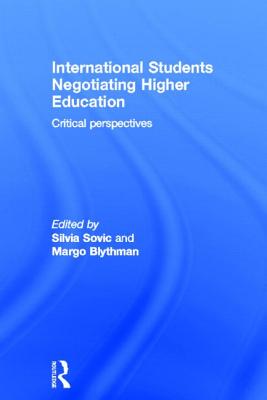This insightful book offers a critical stance on contemporary views of international students and challenges the way those involved address the important issues at hand.
In the current economic climate, more than ever, international students provide an important income to universities. They represent much-needed funds for many institutions, but they also come with their own diverse variety of characteristics and requirements.
This insightful book offers a critical stance on contemporary views of international students and challenges the way those involved address the important issues at hand. To do this, the authors focus specifically on giving voice to the student experience. In particular, the authors show how international student experience can be a ready asset from which to glean valuable information, particularly in relation to teaching and learning, academic support and the formal and informal curriculum. In this way, the issues affecting international students can be seen as part of the larger set of difficulties that face all students at university today.
Integrating contributions from a academics and student voices from a range of backgrounds issues raised include:
- Academic Writing for International Students
- The Internationalisation of the Curriculum
- Identities: The use of stereotypes and auto-stereotypes
- International Students Perceptions of Tutors, and
- The system in reverse, English speaking learners as ''international students''.
This book will be of interest to education management and administrators, higher education professionals, especially those working or training to teach large numbers of international students, to which it offers a unique opportunity to understand better the students point-of-view. Because of this the book will likely appeal to academics in all English speaking countries that recruit significant numbers of international students, as well as the growing number of European universities which teach in English and those in the Indian sub-continent that send large numbers of international students to the UK, Australia, New Zealand and the US.
Get International Students Negotiating Higher Education by at the best price and quality guranteed only at Werezi Africa largest book ecommerce store. The book was published by Taylor & Francis Ltd and it has pages. Enjoy Shopping Best Offers & Deals on books Online from Werezi - Receive at your doorstep - Fast Delivery - Secure mode of Payment
 Jacket, Women
Jacket, Women
 Woolend Jacket
Woolend Jacket
 Western denim
Western denim
 Mini Dresss
Mini Dresss
 Jacket, Women
Jacket, Women
 Woolend Jacket
Woolend Jacket
 Western denim
Western denim
 Mini Dresss
Mini Dresss
 Jacket, Women
Jacket, Women
 Woolend Jacket
Woolend Jacket
 Western denim
Western denim
 Mini Dresss
Mini Dresss
 Jacket, Women
Jacket, Women
 Woolend Jacket
Woolend Jacket
 Western denim
Western denim
 Mini Dresss
Mini Dresss
 Jacket, Women
Jacket, Women
 Woolend Jacket
Woolend Jacket
 Western denim
Western denim
 Mini Dresss
Mini Dresss






























































